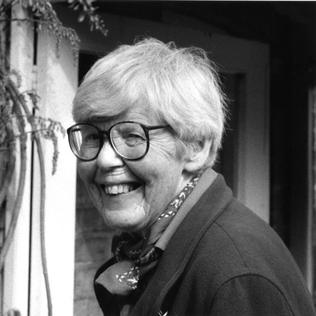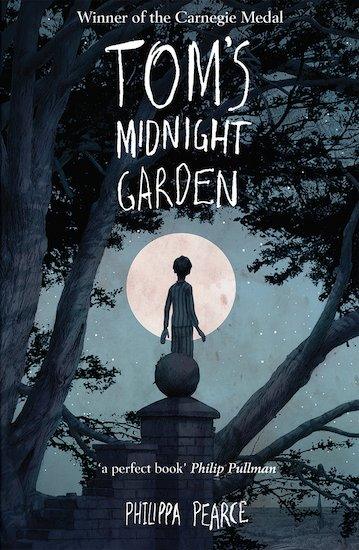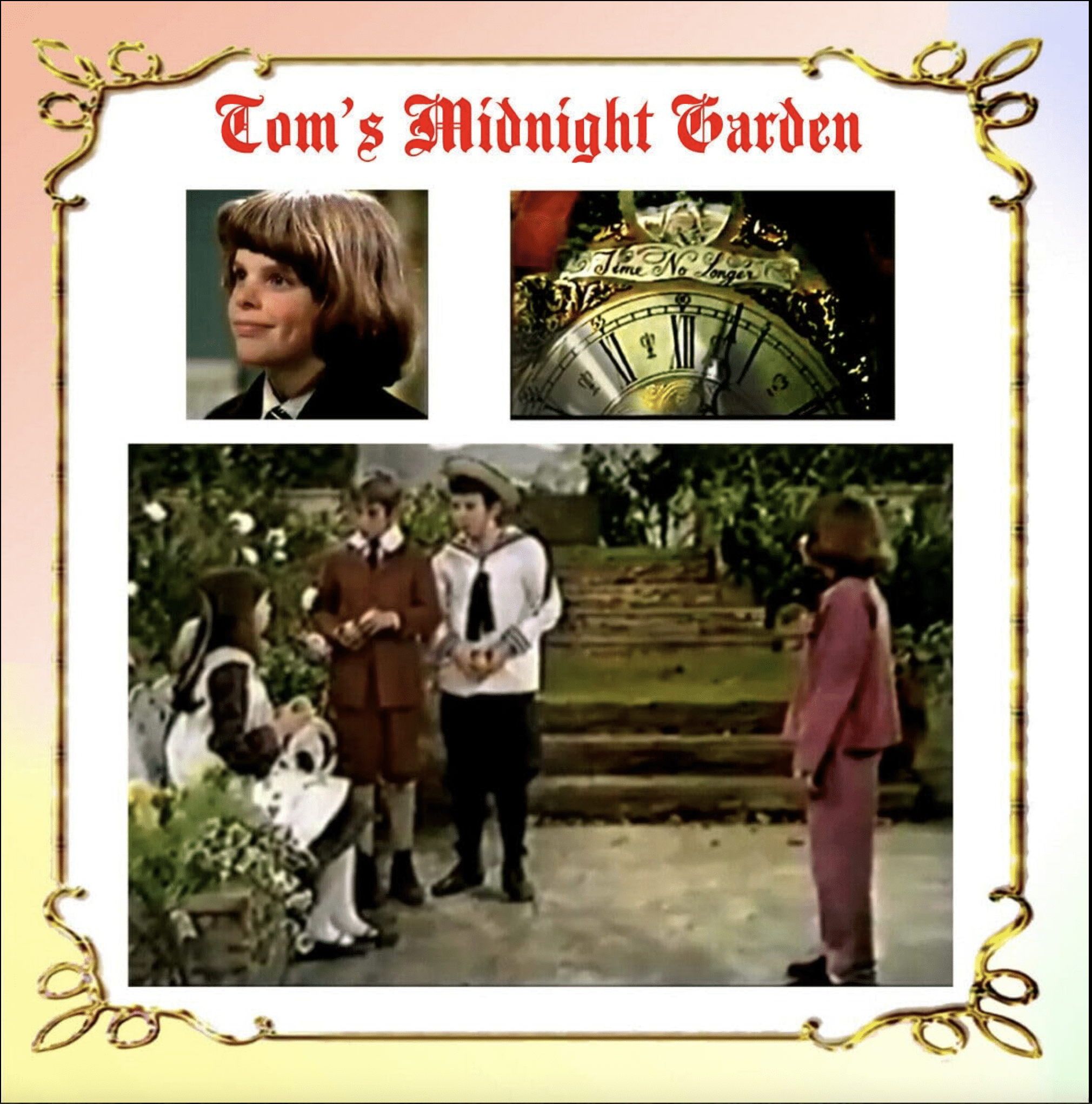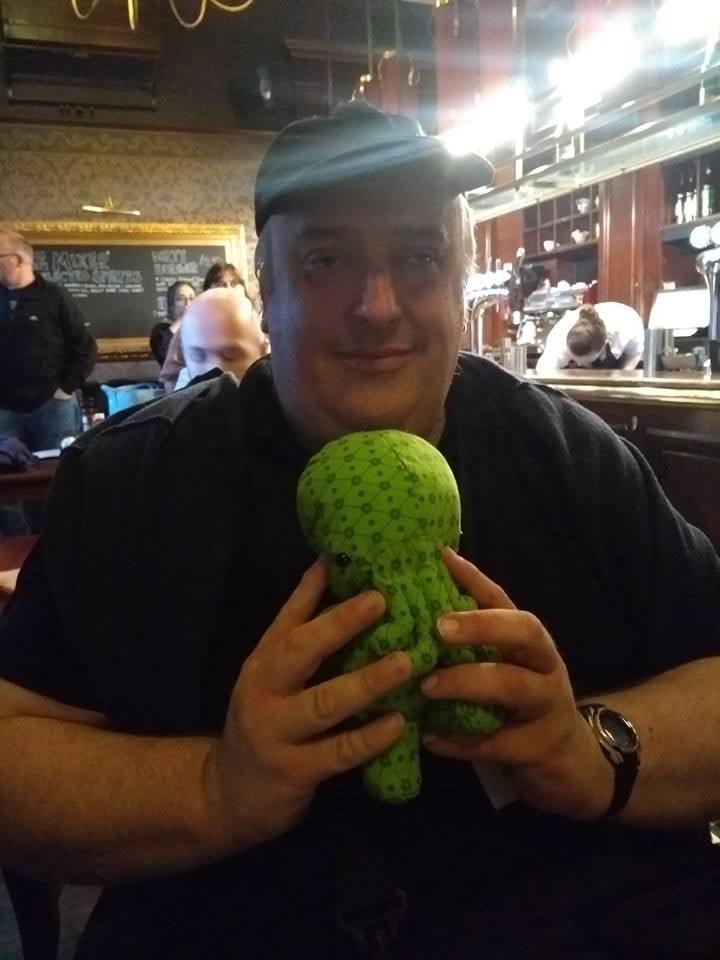In his semi-regular column on the TV that made us SFFH fans, Gary Couzens revisits Tom’s Midnight Garden, a Carnegie Medal-winning novel that’s had multiple adaptations
The 1950s. When his brother Peter catches measles, Tom Long is sent to stay in quarantine with his Aunt Gwen and Uncle Alan. They live in a city house, converted into flats, owned by old Mrs Bartholomew who lives upstairs. She has a grandfather clock which eccentrically never calls the correct time. One night, as Tom is lying awake in bed, he hears it strike thirteen. He goes downstairs and outside the back door, instead of the yard of daytime, is a large garden. Night after night, he explores this new expanse, in the grounds of a large country house, sometime in the past. And then he meets a young girl called Hatty…
Although Philippa Pearce (1920-2006) wrote for children over many years, if there is one of her novels which stands out from her bibliography, it’s Tom’s Midnight Garden, first published in 1958. It won the Carnegie Medal for the best novel for children or teenagers published in the UK that year, and has never been out of print. With the literary success came the interest from film and television, and the BBC in particular drew on her work. No fewer than eight of her books were read to a television audience on Jackanory. In 1967, it was the turn of Tom’s Midnight Garden, and it came in five instalments, our storyteller being Martin Jarvis. In 1971 and 1992 the novel was serialised for radio, and in 2001 adapted for the stage by David Wood. There was also a big-screen version in 1998, of which more below, and of course the two BBC serials (actually three, but more in a moment) which I’ll be concerned with here. Although the novel is inevitably a period piece now shading into historical fiction, and not amenable to being updated, there is still plenty of life in it.
The author
Ann Philippa Pearce was born and brought up in Great Shelford, Cambridgeshire, the youngest of four children. The towns and countryside near there feature in many of her novels and stories, Tom’s Midnight Garden among them.

Childhood illness prevented her going to school until she was eight, but she won a scholarship to read English and History at Girton College, Cambridge. She began to write with children’s radio programmes for the BBC, and she worked in publishing from 1958 to 1967.
During a period in hospital due to tuberculosis in 1951, she wrote her first novel, Minnow on the Say, based on a canoe trip she had made as a child. Published in 1955, it was commended for that year’s Carnegie Medal, a prize which began in 1936 and is still active. She initially used the byline A. Philippa Pearce, including on the first edition of Tom’s Midnight Garden, but later dropped the initial.
In 2007, Tom’s was one of ten books which a panel chose as the Best of the Carnegies, which then went to a public vote. The winner, Philip Pullman (for Northern Lights), said that the voters had the author’s initials right but, if he’d had his way, Tom’s Midnight Garden would have won.
Following Pearce’s death, Homerton College, Cambridge, established an annual Philippa Pearce Lecture celebrating “excellence in writing for children and to establish its continuing vital importance”.
The novel
The novel is a slight period piece, as one clue for Tom as to where Hatty comes from is the fact that that in her time there is a queen on the throne. Of course, when the novel was published, Tom would have been the subject of a different queen for some six years, and one reason the story isn’t easily updated is that (without spoilers) it relies on someone from the reign of Queen Victoria still being alive in the present.
While Tom’s Midnight Garden is undoubtedly fantasy rather than science fiction, Pearce shows some rigour in the way she uses her premise, drawing on the same theories of time by J.W. Dunne which also preoccupied J.B. Priestley. In the 1989 serial, Uncle Alan explains people’s different perceptions of time by invoking Einstein’s Special Relativity. To use the title of a rather earlier children’s novel (itself much adapted), the story draws on the theme of there being a secret garden, a lost realm of childhood that only a few can find and access. Humphrey Carpenter’s book Secret Gardens suggests that the novel drew on Peter Pan, but from Peter’s viewpoint, as Tom slowly sees Hatty grow up and away from him, the magical garden soon to be lost, maybe forever.

Early adaptations
The BBC’s first pass at serialising Tom’s Midnight Garden came ten years after the novel was published, in the form of a serial of three 25-minute episodes. This was broadcast as part of the then-BBC Schools strand Merry-Go-Round, once a week from Monday 18 November. It was shown at 10am during BBC1’s For Schools, Colleges time. There’s not much that can be said about this version as, like so much television from that time, only episode two still exists, the first and last having been wiped. This first adaptation was dramatised by John Tully. He had begun television scriptwriting in 1955, in the days of live television, and had written the SF anthology series Out of the Unknown and the detective series Paul Temple. In the 1970s, he found a sideline in children’s drama, penning an episode of Here Come the Double Deckers! in 1970. As well as Tom’s Midnight Garden, he adapted several other children’s novels into serials, including The Viaduct (1972), Kizzy (1976), and The Phoenix and the Carpet (1976-7). He also wrote The Selkie (1979) for the Children’s Film Foundation.
There are some interesting dots to be joined in the cast. Verna Harvey, who played Hatty (her screen debut, and like most Hattys, older than her character – she was 16), had an acting career that lasted until 1977, with her first film role as Flora in the prequel to The Turn of the Screw, The Nightcomers (1971), directed by Michael Winner. Tom is played by Simon Turner, who later, as Simon Fisher Turner, became a musician, music producer and score composer, but here was in his original career as a child actor. He also appears in the 1974 version, playing Barty. The 1968 version was repeated, again in schools viewing time, in 1970 before it became lost to the ether, other than scripts and other production materials, television listings and the memories of those who saw it. However, quite a bit of it can be gleaned from the 1974 version, produced by Dorothea Brooking, an old hand at children’s drama. It was also directed by her, though she’s not credited on screen as such. It was broadcast in three episodes in the frequently-used Monday afternoon slot, at 5.15pm from 7 January 1974, towards the end of children’s viewing time, in between Blue Peter and a cartoon (this time, Crystal Tipps and Alistair), and then the news.
Into colour
The BBC Children’s Department clearly thought the story could bear another go, particularly it as would now be made in colour as BBC1 had been black-and-white only in 1968. The new version was shot in the studio on videotape with some exteriors shot on film. Both versions are in three 25-minute episodes and have the same three episode titles (“The Clock Strikes Thirteen”, “Are You a Ghost?” and “Time No Longer”).

There may well have been some slight updating in the script: at one point in the 1974 version, Tom describes his experience of being a “ghost” as being like Moon-walking, not a likely term in 1968, as no one had walked on the Moon then, let alone in the 1950s. Tully’s adaptation, given only seventy-five minutes of running time, credits included, for a not-long novel, does cut a lot out of the story, so Peter never appears but is only referred to. The device where Hatty inverts Tom’s name and calls him Long Tom is unique to Tully’s adaptation. The story is strong enough for this version to work, and the final reveal (which of course I won’t disclose) is as lump-in-the-throat stuff as it always is.
Nicky Bridge is rather awkwardly stage-schooly as Tom, a role which requires him to be onscreen for almost the entire duration, onscreen solo for much of it. He continued acting until the end of the decade, usually billed as Nicholas Bridge. The supporting cast are solid, though, with Adrienne Byrne a vivacious Hatty. She also continued acting for a few years, with her last entry on the Internet Movie Database being from 1981. While it’s a good enough adaptation, and it’s the one I remember as I was nine when it was first broadcast, it’s not always the case that remakes are inferior to the originals, as the 1989 version shows.
The iconic version arrives
In 1989, the novel was adapted by Julia Jones and directed by Christine Secombe, shot entirely on video, with exteriors done by an outside-broadcast unit. It was broadcast in six episodes, beginning on Wednesday 4 January, this time between Newsround and Neighbours. Jones (1923-2015) was a prolific writer who combined single plays (including three Wednesday Plays and four Plays for Today), series episodes, and adaptations during a 35-year career. Secombe (niece of Harry) spent most of her career in children’s television, beginning with episodes of Play School in 1971 and ending in 1994 with episodes of Grange Hill.

Jones’s adaptation keeps the story in period, which had become increasingly necessary in the 15 years since the previous version, as there were now much fewer people alive who had been Victorian children. Also, given the additional length, it is able to be much more faithful to Pearce’s novel, often using the same dialogue—a tribute to Pearce’s ability, as novelistic dialogue is certainly not always good cinematic or televisual dialogue. This means that, as well as Tom (Jeremy Rampling) and Hatty (Caroline Waldron), his aunt and uncle, and Mrs Bartholomew upstairs, we also see Peter and his and Tom’s mother, including the sequence where Peter is transported with Tom to Hatty’s time. It also includes the scene where Tom goes even further back into history and meets newly-orphaned Hatty, a little girl in mourning black. Jeremy Rampling gives a fine performance, though he didn’t continue to act: his only other screen role was in an episode of Casualty the following year. Caroline Waldron had a number of further roles but moved behind the scenes into film production; she was the associate producer of Dog Soldiers (2002). Mrs Bartholomew is a late role for Renée Asherson, whose career had gone back to 1939, her first credited roles being in The Way Ahead and Henry V, both in 1944. She continued acting until 2001, her final role being in The Others, and died in 2014 aged 99. The serial was released on DVD in 2017.
Does it still have legs?
The 1989 version of Tom’s Midnight Garden is the best as made by the BBC and I suspect will remain so even if the two missing episodes from 1968 turn up (I haven’t been able to see the surviving one). Whether the BBC will tackle it again is a good question. While the novel still has currency, it’s an inevitable period piece, or rather now even a historical one, which makes for a more expensive production.
However, there’s no reason why others can’t tackle the novel, and that happened in 1998, the film made and premiered in that year but not released in British cinemas until 13 October 2000, clearly pitched as a (PG-rated) family film for half term. That it spent nearly two years on the shelf might throw up a red flag or two, but the film, written and directed by Willard Carroll, works well.
In the spirit of what’s not broken doesn’t need fixing, it’s faithful to the novel but adds a frame story set in the later 1990s with the adult Tom (Nigel Le Vaillant) being married with a daughter and working in an office with a contemporary London skyline. The demolition of the old house leads into the main story which plays as a lengthy flashback. While nicely done, if a little sentimental, this frame could have been dispensed with. Once again, the central role of Tom is the weak link, with Anthony Way miscast: he’s clearly a mid-teen (sixteen at the time of shooting) rather than the child he should be, and you wonder about some of the restrictions on him, even in the 1950s. As Hatty, Florence Hoath (who had played one of the central roles in FairyTale: A True Story the previous year, based on the story of the Cottingley Fairies, and would feature in the 2005 Doctor Who two-parter “The Empty Child” and “The Doctor Dances”) does most of the heavy lifting, with Caroline Carver stepping in towards the end as the older-teen version of the character. While it works well enough, it doesn’t replace the 1989 serial as the best, though being a feature film it is more widely available.
Philippa Pearce was alive when all these versions were made, though her reaction to them is not on record. As the novel’s setting retreats into the past, you do wonder if the story will do likewise and if younger readers will still respond to it. Hopefully they will.
Do you remember Tom’s Midnight Garden? Let us know what you thought in the comments below ⬇️

All images of adaptations taken from IMDb.com



Leave a Reply